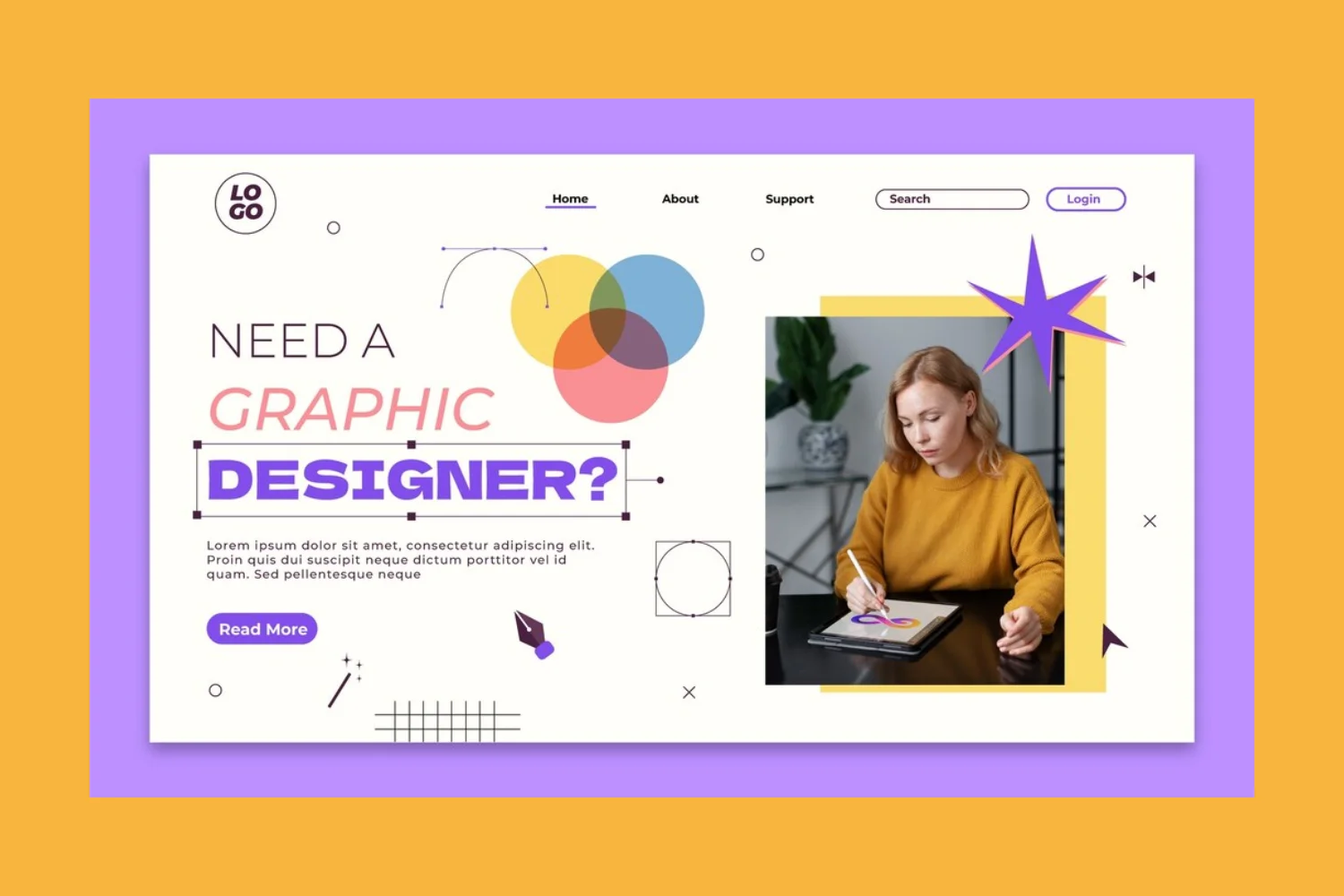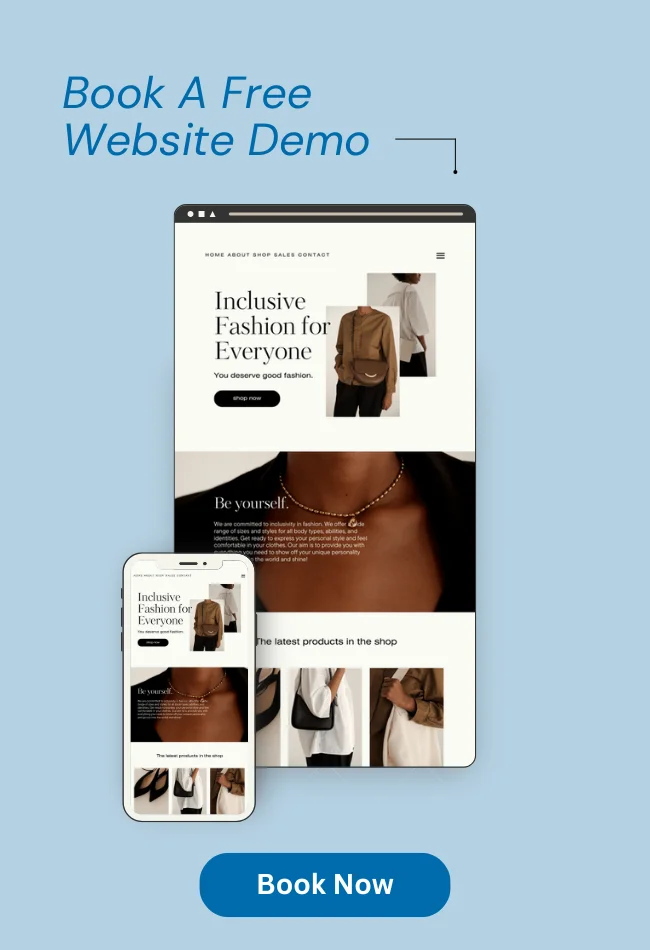In the highly competitive world of design, a graphic designer’s portfolio website is far more than just an online resume; it’s a dynamic canvas, a digital handshake, and often the first impression that makes or breaks a career opportunity. To truly stand out, a best graphic designer website must not only showcase exceptional work but also embody the designer’s unique style, professionalism, and understanding of user experience. It’s where creativity meets functionality, transforming a collection of projects into a compelling narrative that captivates potential clients and collaborators.
This comprehensive guide will delve into the essential characteristics that define a top-tier graphic designer’s website. We’ll explore the strategic elements that make these sites impactful, provide actionable advice on building your own, and highlight inspiring examples from leading designers and platforms that master the art of online self-promotion. Whether you’re a seasoned professional looking to refresh your portfolio or an aspiring designer building your first online presence, understanding these best practices is crucial for cultivating connection and securing opportunities.
What Makes a Graphic Designer’s Website Stand Out?
A truly effective graphic designer’s website transcends mere aesthetics. It’s a meticulously crafted digital experience that reflects the designer’s capabilities and personality. Here are the core principles that elevate a good website to the status of a best graphic designer website:
- Impeccable Visual Appeal: This is non-negotiable. The website itself must be a testament to the designer’s aesthetic sensibilities. It should be clean, modern, visually engaging, and reflect the quality of the work it presents.
- A Strong, Curated Portfolio: Quality over quantity. A designer’s website should feature their absolute best and most relevant work, presented in a way that highlights their skills and problem-solving abilities.
- Clear and Intuitive Navigation: Visitors should effortlessly find what they’re looking for, whether it’s the portfolio, services, or contact information. A confusing layout detracts from the user experience.
- Mobile Responsiveness: With a significant portion of web traffic coming from mobile devices, the website must look and function flawlessly on all screen sizes, from desktops to smartphones.
- Compelling Storytelling: Beyond just showing final designs, the best websites tell the story behind the work. They explain the challenge, the process, and the impact, demonstrating strategic thinking.
- Authentic Personal Branding: The website should convey the designer’s unique voice, personality, and approach to design. This helps clients connect on a deeper level and understand what makes the designer different.
Essential Elements of a Top Graphic Designer Website
To build a best graphic designer website, certain key sections and features are indispensable. Each element plays a crucial role in presenting a holistic and professional image.
The Portfolio: Your Masterpiece Gallery
This is the heart of any designer’s website. It should be meticulously curated and presented.
- Quality Over Quantity: Only showcase your absolute best work. A smaller collection of outstanding projects is far more impressive than a large volume of mediocre ones.
- Diverse Projects: If you have a range of skills (e.g., branding, web design, print, illustration), include examples that demonstrate your versatility.
- Case Studies, Not Just Images: For each project, provide context. Explain the client’s problem, your design process, the tools you used, and the final outcome. Show sketches, iterations, and mockups to illustrate your thinking. This demonstrates your problem-solving abilities.
- High-Resolution Imagery: Ensure all images are crisp, clear, and load quickly. Mockups that show your work in real-world applications are highly effective.
About Me/Us: The Human Connection
This section allows clients to get to know the person (or team) behind the designs.
- Personal Story & Philosophy: Share your journey into design, what inspires you, and your design philosophy. This builds rapport and trust.
- Unique Selling Proposition (USP): What makes you different? Do you specialize in a niche, have a particular style, or offer a unique client experience?
- Professional Photo: A high-quality headshot adds a personal touch and helps clients put a face to the name.
Services Offered: Clarity is Key
Clearly outline the types of design work you provide.
- Specific List: Don’t just say “graphic design.” List your specializations, such as logo design, brand identity, web design, print collateral, illustration, packaging design, UI/UX design, etc.
- Process Overview: Briefly explain your typical workflow for projects. This sets expectations and demonstrates professionalism.
Contact Information: Make it Easy to Connect
A clear call-to-action for collaboration is vital.
- Multiple Contact Methods: Provide an email address, a contact form, and potentially a phone number.
- Availability/Response Time: Manage expectations by indicating your typical response time.
Testimonials/Client Logos: Building Trust
Social proof is incredibly powerful in convincing potential clients.
- Direct Quotes: Include genuine testimonials from satisfied clients, highlighting specific positive outcomes.
- Client Logos: If you’ve worked with recognizable brands, display their logos (with permission) to add credibility.
Blog/Insights: Demonstrating Expertise
A blog can position you as a thought leader and improve your website’s SEO.
- Share Your Knowledge: Write about design trends, your creative process, tool reviews, or industry insights.
- Showcase Expertise: Regular posts demonstrate your ongoing engagement with the design world and your depth of knowledge.
Inspiring Examples: The Best Graphic Designer Websites
To truly grasp what makes a best graphic designer website, let’s look at some exemplary online portfolios and platforms that set the standard. These examples showcase diverse styles, approaches, and specializations.
Personal Portfolios (Individual Designers)
- Jessica Hische: Known for her intricate lettering and illustration, Hische’s website is a masterclass in personal branding and showcasing a distinct style. It’s playful, informative, and perfectly reflects her work.
- Debbie Millman: A renowned designer, author, and host of Design Matters, Millman’s site is sophisticated and content-rich, highlighting her extensive career and thought leadership.
- Tobias van Schneider: His portfolio is clean, bold, and focuses on large, impactful visuals. He’s known for his work with Spotify and his minimalist aesthetic.
- Anton & Irene: While a duo, their website functions as a highly interactive and visually rich portfolio, pushing the boundaries of web design to showcase their digital projects.
- Louise Fili: Her website beautifully showcases her iconic work in branding and packaging design, with a classic, elegant aesthetic that mirrors her design style.
- Sagmeister & Walsh (Stefan Sagmeister’s work): Known for their experimental and often provocative design, their website is a bold statement, reflecting their unique approach.
- Chris Do (The Futur): While primarily an educational platform, Chris Do’s personal section on The Futur’s website effectively showcases his design philosophy and expertise in branding and business.
- Erik Spiekermann: A legendary typographer and designer, his website is straightforward, functional, and embodies his commitment to clarity and precision in design.
- Paula Scher (Pentagram Partner): As a partner at Pentagram, her work is showcased within the agency’s site, demonstrating how a clear, project-focused presentation can highlight individual contributions within a larger firm.
- Luke Choice (Velvet Spectrum): His website is a vibrant, immersive experience, showcasing his stunning 3D illustrations and animations, proving that a designer’s site can be a work of art itself.
Agency Websites (Teams of Designers)
- Pentagram: One of the world’s most famous design agencies, their website is a masterclass in showcasing diverse, high-profile projects with clarity and impact.
- Wolff Olins: Known for their bold brand transformations, their website features dynamic visuals and insightful case studies that articulate their strategic approach to design.
- Huge: A global experience agency, their site is modern, interactive, and clearly communicates their expertise in digital design and user experience.
- DesignStudio: Their website is sleek and sophisticated, presenting their branding and digital design projects with a strong emphasis on visual storytelling.
- Landor & Fitch: A global brand transformation company, their site is professional and showcases their extensive work in brand strategy and design across various industries.
Portfolio Platforms & Communities
These platforms are essential for discovering talent and gaining inspiration.
- Behance: Adobe’s leading online platform for creative professionals to showcase and discover creative work. It’s a vast repository of graphic design projects from around the world.
- Dribbble: A popular community for designers to share “shots” of their work. It’s excellent for quick visual inspiration and seeing trending design styles.
- Awwwards: Recognizes the best in web design, often featuring highly innovative and visually striking websites by graphic designers and agencies.
- Cargo Collective: A popular platform for designers to create minimalist, image-focused portfolios that put the work front and center.
- Adobe Portfolio: Included with Creative Cloud subscriptions, it allows designers to quickly create professional portfolios that sync with Behance.
Niche & Specialized Portfolios
- House Industries: A renowned type foundry and design studio, their website is a playful and highly stylized showcase of their iconic typefaces and design projects.
- Mucho: A global design studio specializing in brand identity, their site is clean, elegant, and effectively presents their diverse branding projects.
- Jessica Walsh (from &Walsh): Her agency’s website is known for its bold, colorful, and often whimsical design, reflecting her distinctive style and innovative approach to branding.
- Pentagram (specific partner pages, e.g., Michael Bierut): While Pentagram is listed, exploring individual partner pages like Michael Bierut’s provides a deeper dive into their specific contributions and design philosophies.
- Paula Scher (Pentagram Partner): Another Pentagram partner, her page highlights her groundbreaking work in identity and environmental graphics, demonstrating the power of concise project presentation.
- Design by Stamen: Known for their innovative data visualization and mapping, their website is a testament to how graphic design can be applied to complex information, making it visually compelling.
- Kelli Anderson: Her website showcases her diverse work, from book design to interactive paper projects, emphasizing creativity and unique problem-solving.
- Sagmeister & Walsh (Stefan Sagmeister’s personal site): Stefan Sagmeister’s personal site is an extension of his experimental approach, often featuring unique navigation and a strong personal voice.
- Malika Favre: Her portfolio is a vibrant display of her distinctive illustration style, using bold colors and clean lines to create impactful visuals.
- Studio Dumbar: A Dutch design agency known for its dynamic identities and digital experiences, their website is a strong example of motion graphics and interactive design in a portfolio context.
Building Your Own Best Graphic Designer Website
Creating your own standout portfolio website is a project in itself. Here are some tips to guide you:
- Choose the Right Platform:
- For beginners/ease of use: Squarespace, Wix, Adobe Portfolio. These offer templates and drag-and-drop interfaces.
- For more customization/control: WordPress (with themes like Elementor or Divi), Webflow. These require a steeper learning curve but offer immense flexibility.
- For minimalist, image-focused: Cargo Collective.
- Prioritize High-Quality Visuals: This cannot be stressed enough. Invest in professional mockups or learn how to create them. Ensure your images are optimized for web (good resolution, small file size).
- Focus on User Experience (UX): Make it easy for visitors to navigate. Use clear headings, readable fonts, and sufficient white space. Test your site on different devices.
- Tell Your Story: Don’t just list your skills. Explain your passion, your process, and what drives your design decisions.
- Get Feedback: Before launching, ask friends, mentors, or fellow designers to review your site for clarity, functionality, and impact.
- Keep It Updated: Your portfolio should evolve with your skills and experience. Regularly add new projects and remove outdated ones.
Conclusion
In the dynamic world of graphic design, your website is your most powerful marketing tool. A best graphic designer website is a carefully crafted blend of stunning visuals, compelling storytelling, and intuitive functionality. It’s where your creativity shines, your expertise is demonstrated, and your unique value proposition is clearly communicated. By curating a strong portfolio, articulating your process, and making it easy for clients to connect with you, you can transform your online presence into a magnet for exciting opportunities. Embrace your website as an ongoing design project, constantly refining it to reflect your growth and passion for the craft.
Ready to elevate your online presence and attract your dream clients? Start building or refining your graphic designer website today! Share this blog with aspiring designers and seasoned pros alike!
Frequently Asked Questions (FAQs)
Q1: What is the most important element of a graphic designer’s website?
The most important element is the portfolio. It’s where you showcase your actual work, demonstrating your skills, style, and problem-solving abilities. A well-presented portfolio with strong case studies is crucial for attracting clients.
Q2: How many projects should I include in my online portfolio?
Focus on quality over quantity. Aim for 5-10 of your absolute best and most relevant projects. It’s better to have fewer, meticulously presented projects than a large collection of inconsistent work.
Q3: Should I include personal projects on my graphic designer website?
Yes, absolutely! Personal projects can be incredibly valuable. They allow you to showcase your passion, experiment with new styles or techniques, and demonstrate your creativity without client constraints. They can also fill gaps if you’re just starting out or transitioning into a new niche.
Q4: How do I write effective case studies for my portfolio?
Effective case studies explain the “why” behind your designs. For each project, include:
- The Challenge: What problem were you trying to solve for the client?
- Your Role & Process: How did you approach the project? What steps did you take?
- The Solution: Present the final design.
- The Impact/Results: How did your design help the client achieve their goals? (e.g., increased engagement, improved brand recognition).
- Include sketches, wireframes, or iterations to show your thinking.
Q5: What’s the best platform for a graphic designer’s website?
There’s no single “best” platform; it depends on your needs.
- For ease of use: Squarespace, Wix, Adobe Portfolio.
- For customization: WordPress (with builders like Elementor), Webflow.
- For quick sharing/discovery: Behance, Dribbble. Choose a platform that allows you to present your work beautifully and is easy for you to manage.
Q6: How often should I update my graphic designer website?
You should aim to update your website regularly, ideally whenever you complete a significant new project. At a minimum, review and refresh your portfolio annually to ensure it reflects your current skills, style, and the type of work you want to attract.
Q7: How can I make my website stand out if I’m a new designer with limited experience?
Focus on quality personal projects that demonstrate your skills and passion. Create mock-up projects for fictional brands or redesign existing ones to show your abilities. Emphasize your unique perspective, learning agility, and enthusiasm in your “About Me” section. Network and share your work on platforms like Behance and Dribbble to gain exposure.










![_iPhone Screen Size & Resolution All iPhone Display Sizes Guide [2025] iPhone Screen Size & Resolution | All iPhone Display Sizes Guide [2025]](https://neefox.com/wp-content/uploads/elementor/thumbs/iPhone-Screen-Size-Resolution-All-iPhone-Display-Sizes-Guide-2025-rgmkelp2h92gpnmfqsmjdkahpn01tobstqqhbrcigg.png)

